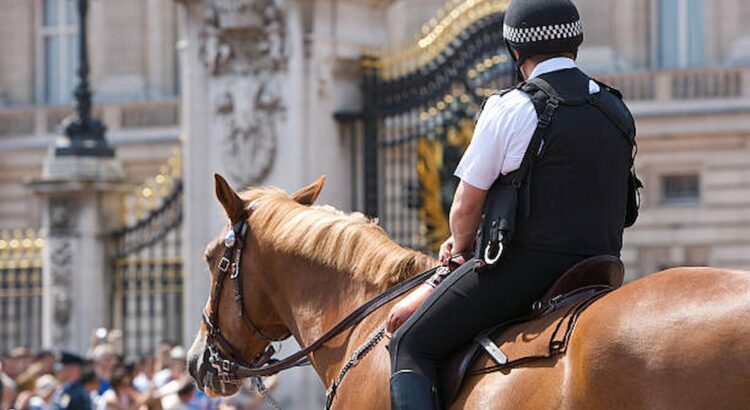Throughout history, horses have been used to help with many aspects of our day-to-day lives and they still play an integral part in the police force today. Police horses are used in settings that require crowd control and they help officers keep people safe by offering them a secure view from an elevated position. But have you ever thought about what makes a great police horse? Read on as we look at the attributes of police horses, how they are trained and the best horse food that sustains them during their working life.
Why Are Police Horses Necessary?
If you’ve ever been to a large event, you may have noticed police officers on horses – and it may have got you wondering, why do the police use horses when they have modern vehicles and technology? No matter what city you go to, whether it be in the UK, or abroad, you are likely to see police horses patrolling the streets. It may seem like an outdated practice, but horses are still used for good reasons.
Police horses are commonly used to control crowds at big events like festivals, football matches, and in busy cities, and they are particularly great for this as they offer a height advantage that allows the officer to get a better view of the crowd. They are also able to move more easily and safely between people than a police officer on foot, or in a vehicle would manage. They can also help to defuse violent and rowdy situations – horses are large, strong creatures and there are not many people that would be happy to face one! They can be used in search and rescue operations in various terrains, and police officers often comment that horses are a great way to begin an interaction with people who may resent the presence of police. tradition.
What Are The Attributes Of A Police Horse?
Of course, there are certain attributes that horses must display to show that they are suitable to be used as police horses. Similar to human police officers, police horses have to be calm but brave and able to cope with stressful situations. The crowds and noise of large events that police horses attend are not something horses would naturally be exposed to and so training is vital to give horses the confidence to cope.
A Police Horse’s Diet
The diet of police horses could have an impact on the way that they perform, and because good behaviour is one of the most important attributes of a police horse, they must be given the correct type of horse food so that they can tackle all types of situations to the best of their abilities.
As we’ve mentioned above, a police horse needs to be calm and less reactive to scary situations than they would be naturally. High-starch meals can cause peaks and troughs in a horse’s energy and blood glucose levels which can make them over-excitable and more reactive to novel situations. Feeds with a low glycaemic response (meaning they won’t cause a spike in blood sugar) are more suited to horses that need to be calm and collected, as they release energy slowly and more consistently. Foods like sugar beet pulp and alfalfa can help with this.
How Do They Train?
Just like police officers, police horses need to go through rigorous training to prepare them to serve reliably. It can take a horse anywhere from 6 months to two years to be fully trained to a standard that means they are ready to patrol with their rider. One of the main types of training that police horses must succeed in is nuisance training – this prepares horses for situations that they may have to face throughout their time in the force. Nuisance training includes the potential police horse being subjected to general rowdy behavior, like shouting, loud bangs, drums, flags and sometimes even flying objects like tennis balls. The horse will wear full riot protection during this training so that they can get used to wearing it. Police horses are trained to be both powerful and calm, and because of this, they are one of the best tools that a force can utilize.




